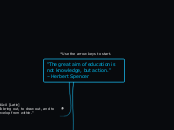af Jessica Mocella 5 år siden
299
Professional Learning: Toward Permanent Change in thinking
Navigating the complexities of problem-solving requires a structured approach that integrates various phases, including identifying the type of problem, whether it is a design, decision-making, or diagnostic issue.









